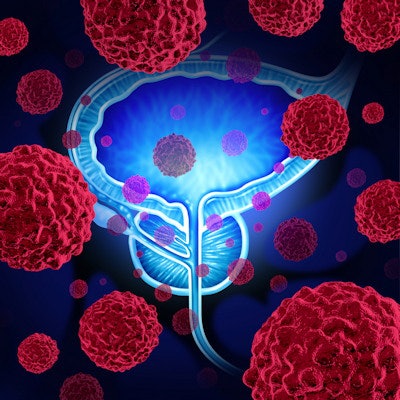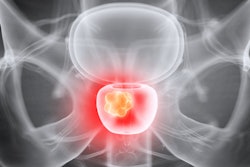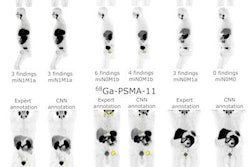
Preprostatectomy, MRI-based staging features perform comparably to postsurgical pathologic staging features for predicting whether prostate cancer will recur, according to a study published July 5 in the American Journal of Roentgenology.
The findings suggest that MRI could help clinicians assess patients' prostate cancer recurrence risk before they undergo surgery, wrote a team led by Katie Merriman of the National Cancer Institute in Bethesda, MD.
"MRI staging can preoperatively identify patients at high biochemical recurrence risk, helping to inform early clinical decision making," the group noted.
Clinicians tend to try to predict biochemical prostate cancer recurrence (an increase in prostate specific antigen levels) after prostatectomy using specimens from the surgery, but this approach creates "a gap in preoperative risk assessment," Merriman and colleagues noted.
They sought to investigate whether presurgical staging information from MR imaging could be as or more effective in this regard compared with prostatectomy pathology via a study that included data from 604 patients with prostate cancer who underwent MR imaging before radical prostatectomy between June 2007 and December 2018.
A genitourinary radiologist assessed these exams for extraprostatic extension, or EPE (the presence of tumor cells beyond the prostate) and cancer cell invasion into the seminal vesicle (SVI). The researchers then assessed how influential these two factors were when identified on MRI versus prostatectomy pathology for predicting disease recurrence, using biochemical recurrence prediction models such as the University of California San Francisco Cancer of the Prostate Risk Assessment (or CAPRA, a presurgical assessment tool) and CAPRA-S (a postsurgical assessment tool). They also used two CAPRA-MRI models that modified CAPRA-S by replacing prostatectomy staging features with MRI staging features.
The team found that predictors of prostate cancer recurrence after prostatectomy included the presence of EPE on MRI (hazard ratio, 3.6, with 1 as reference) and SVI on MRI (hazard ratio, 4.4), and EPE and SVI after prostatectomy (hazard ratio, 5 and 4.6, respectively). All of these results were statistically significant.
| Recurrence-free survival rates postprostatectomy by prediction model | ||||
| Survival rates | Patients without EPE | Patients with EPE | Patients without SVI | Patients with SVI |
| 3-year prostate cancer recurrence-free survival | ||||
| MRI | 84% | 59% | 82% | 50% |
| Prostatectomy pathology | 89% | 58% | 83% | 54% |
Three-year prostate cancer recurrence-free survival rates after surgery were 41% for those not categorized with T3 disease on prostatectomy pathology via MRI, compared to 67% for those who were categorized as such. Finally, the area under the receiver operating curve (AUC) values for all the disease prediction models ranged from 0.74 to 0.79.
The study results demonstrate that presurgical MRI offers a way to identify patients at high recurrence risk before they undergo surgery, according to Merriman and colleagues.
"MRI staging may guide the presurgical identification of patients who may benefit from adjuvant or early adjuvant treatments and improve post-surgical biochemical recurrence prediction," they concluded. "The findings overall support the development of versions of current clinical biochemical recurrence prediction algorithms that incorporate presurgical MRI staging features."
The complete study can be found here.




.fFmgij6Hin.png?auto=compress%2Cformat&fit=crop&h=100&q=70&w=100)




.fFmgij6Hin.png?auto=compress%2Cformat&fit=crop&h=167&q=70&w=250)











